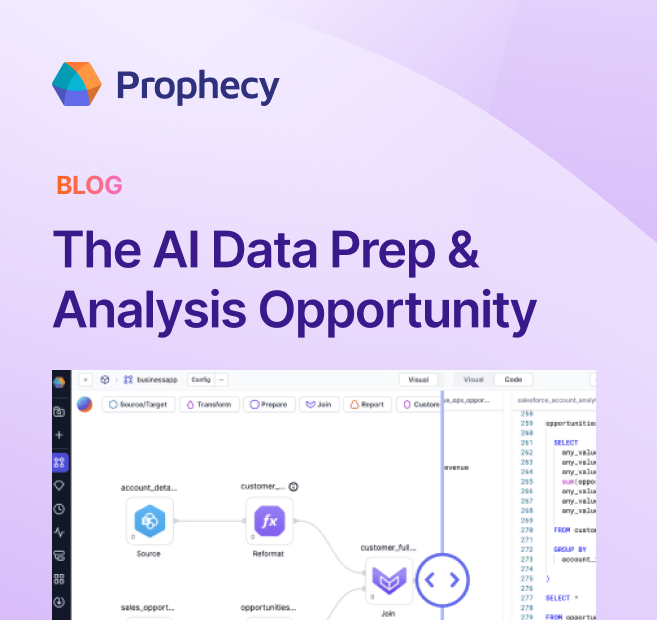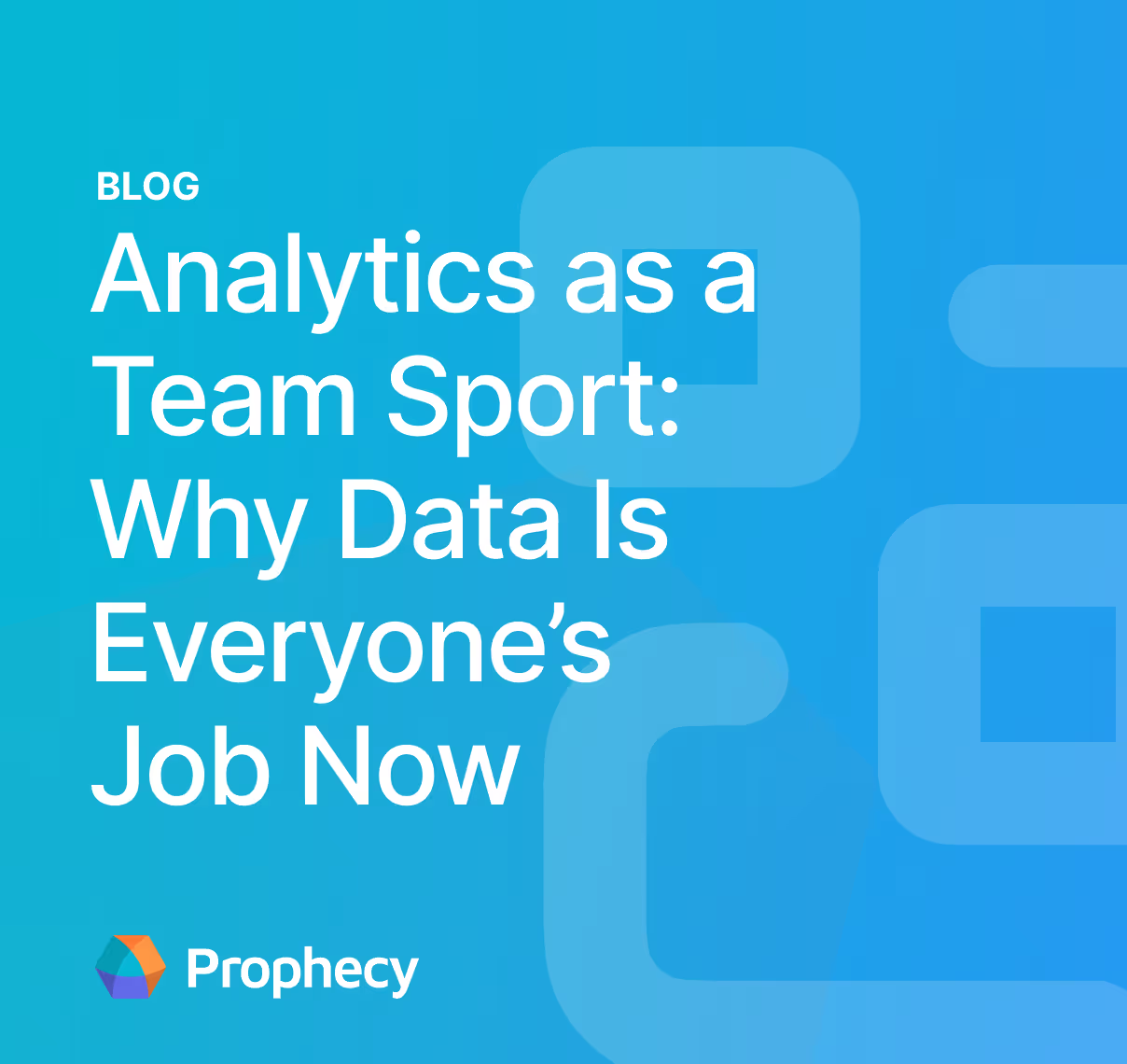Data Mesh vs Data Lake Misses the Point. Ask This Instead
Stop debating data mesh vs data lake. Central data teams need reframing tools to focus on solutions to challenges.
As data volumes explode and business demands accelerate, your executive team is pressing for answers: should you implement "data mesh" or expand your existing data lake?
Some sources position these as competing architectures, and many articles online frame this as a binary choice that will define your data strategy. But this comparison creates a fundamental problem—you're being asked to choose between a storage architecture and an organizational operating model.
This flawed framing is driving confusion across enterprise data teams and potentially steering critical decisions in the wrong direction. This article explains why the mesh versus lake debate misses the point entirely, then provides the decision frameworks you actually need to address your team's scaling challenges and governance bottlenecks.
Why Data Mesh vs. Data Lake Is the Wrong Question
A data lake is a technical architecture that determines how you store and process data. Data mesh is an organizational operating model that determines how teams own and govern data assets.
They are not competing architectural choices. Treating them as such is analogous to debating "should we use cloud infrastructure or implement agile methodology?" The question doesn't make sense because cloud infrastructure addresses technical requirements while agile methodology addresses team organization and processes.
You can absolutely implement agile methodology using cloud infrastructure—in fact, many organizations do exactly that.
Similarly, you can implement data mesh principles using data lakes as your underlying storage architecture. Many successful data mesh implementations rely on data lake technologies like Delta Lake, Databricks, or cloud object storage to provide the technical foundation for domain-owned data products.
This category confusion has real consequences for data teams. When executives ask "data mesh or data lake," they're often conflating organizational challenges with technical ones.
The result is misaligned solutions that fail to address the actual problems your data organization faces, whether those problems are technical bottlenecks, governance gaps, or team scaling issues.
What is a Data Lake?
A data lake is a centralized storage repository that holds vast amounts of raw data in its native format until needed for analysis or processing.
Data lakes flip the traditional warehouse model by implementing "schema-on-read"—storing data first, then applying structure when accessing it for specific use cases.
The architecture typically includes object storage (like Amazon S3 or Azure Data Lake Storage), compute engines for processing (Spark, Databricks), catalog systems for metadata management, and various access layers for different analytical workloads.
However, data lakes are purely technical infrastructure. They don't dictate who owns the data, how governance decisions are made, or how teams collaborate around data assets. These organizational questions require entirely different solutions.
What data lakes solve vs. what they don't
Understanding data lakes requires recognizing the specific problems they address—and crucially, the ones they don't.
Data lakes solve technical infrastructure challenges such as:
- How to store petabytes of diverse data cost-effectively
- How to process unstructured data alongside structured datasets
- How to provide flexible access patterns for different analytical workloads.
When your team debates compute engines, storage formats, or catalog implementations, you're making data lake decisions.
But data lakes don't solve organizational challenges like who owns data quality, how to prevent bottlenecks as data requests multiply, or how to align data governance with business domains. These problems persist regardless of where you store your data.
This distinction matters because the most common data lake failures aren't technical—they're organizational.
What is Data Mesh?
Data mesh is an organizational operating model that decentralizes data ownership to domain teams who treat their data as products rather than byproducts of business operations.
Introduced by Zhamak Dehghani, data mesh emerged as a response to the organizational bottlenecks and scaling challenges that plague centralized data architectures. Rather than pooling all data assets under a single team's control, data mesh distributes ownership to cross-functional domain teams that understand the business context of their data.
This approach fundamentally shifts how organizations think about data governance, moving from centralized control to federated accountability.
Domain teams become responsible for the quality, documentation, accessibility, and lifecycle management of their data products, while a central governance function establishes enterprise-wide standards and policies.
Crucially, data mesh is not a technology—it's an organizational philosophy that requires significant cultural and structural changes to implement successfully.
What data mesh solves vs. what it doesn't
Data mesh addresses the organizational bottlenecks that central data teams face as they scale, but it doesn't eliminate the need for technical infrastructure—it changes who manages it.
If your central data team is becoming a bottleneck, data mesh directly addresses this by distributing ownership to domain teams. Instead of funneling all data requests through your team, domains become accountable for their own data products.
This eliminates the queue of pipeline requests that grows faster than you can hire engineers.
Data mesh also solves the context problem that plagues central teams. When your engineers build pipelines for sales data without understanding the sales process, quality issues are inevitable.
Domain ownership puts data responsibility with teams who understand the business logic, reducing the back-and-forth clarifications and rework that consume your team's bandwidth.
The maintenance burden that's crushing your team gets distributed as well. Instead of your engineers debugging pipeline failures across dozens of domains they barely understand, domain teams maintain their own data products.
When source systems change, the teams closest to those systems handle the updates.
However, data mesh doesn't eliminate technical infrastructure decisions—it changes who makes them. Domain teams still need storage systems, compute engines, catalog tools, and monitoring platforms. You're not choosing between data mesh and data lakes; you're choosing between centralized vs. distributed management of data lake infrastructure.
Domain teams implementing data mesh often rely on the same technical components your central team uses today: object storage, Spark processing, Delta Lake formats, and cloud platforms.
The difference is that multiple domain teams operate these tools independently rather than everything flowing through your central pipeline factory.
This organizational shift requires significant investment in platform capabilities and domain team training—challenges that pure technical solutions can't address.
The questions central data teams should actually be asking
When executives ask "mesh or lake," you need reframing tools to redirect the conversation toward decisions that actually matter. Here are the frameworks to shift from false choices to productive evaluation.
Do we have the organizational maturity to distribute data ownership?
Instead of asking "Should we implement data mesh or expand our data lake," ask: "Do we have the organizational maturity to distribute data ownership?" This reframes the conversation around your actual constraint—team capabilities and culture—rather than technology selection.
Present this framework to stakeholders: "Data lakes solve our storage and processing needs. The question is whether we manage them centrally or distribute ownership to domain teams. That depends on whether domains have data engineering capabilities and willingness to take ownership."
What specific bottlenecks are we trying to solve?
When vendors pitch mesh vs lake solutions, redirect with: "What specific bottlenecks are we trying to solve?" Map current pain points to organizational vs. technical causes. Pipeline development backlogs are organizational problems. Query performance issues are technical problems. Different problems require different solutions.
Ask stakeholders: "Are we blocked by infrastructure limitations or team capacity constraints?" This separates genuine technical needs from organizational scaling challenges that technology alone can't solve.
How can we implement domain ownership principles within our existing technical architecture?
When teams force either-or decisions, introduce: "How can we implement domain ownership principles within our existing technical architecture?" This acknowledges that most successful implementations combine elements of both approaches rather than pure implementations.
Frame it as: "We're not choosing between two architectures. We're choosing how to organize teams around our data infrastructure."
Choose your organizational model, then enable it with the right tools
Prophecy's data transformation copilot supports both organizational models without forcing you to choose between governance and agility.
- For centralized teams choosing efficiency: Use Prophecy's visual interface and AI-powered development to accelerate pipeline creation while maintaining full control. Your team builds faster, reduces backlog, and delivers more value without organizational restructuring.
- For teams pursuing domain ownership: Enable business users to self-serve data pipeline development while maintaining enterprise governance. Domain teams build their own data products using visual tools that generate native Spark/SQL code, but within guardrails you establish.
You're not choosing between competing technologies. You're choosing how to organize teams around data, then selecting tools that enable your chosen model.
Prophecy bridges this gap by providing governed self-service—business teams get autonomy while central teams maintain architecture standards and controls.
Stop debating mesh versus lake. Start evaluating your organizational readiness, then implement tools that support whichever model fits your reality. Assess your organization´s data integration maturity and build a custom approach tailored to your needs.
Ready to give Prophecy a try?
You can create a free account and get full access to all features for 21 days. No credit card needed. Want more of a guided experience? Request a demo and we’ll walk you through how Prophecy can empower your entire data team with low-code ETL today.
Ready to see Prophecy in action?
Request a demo and we’ll walk you through how Prophecy’s AI-powered visual data pipelines and high-quality open source code empowers everyone to speed data transformation
Get started with the Low-code Data Transformation Platform
Meet with us at Gartner Data & Analytics Summit in Orlando March 11-13th. Schedule a live 1:1 demo at booth #600 with our team of low-code experts. Request a demo here.
Related content
A generative AI platform for private enterprise data
Introducing Prophecy Generative AI Platform and Data Copilot
Ready to start a free trial?
Lastest posts

The AI Data Prep & Analysis Opportunity

The Future of Data Is Agentic: Key Insights from Our CDO Magazine Webinar


